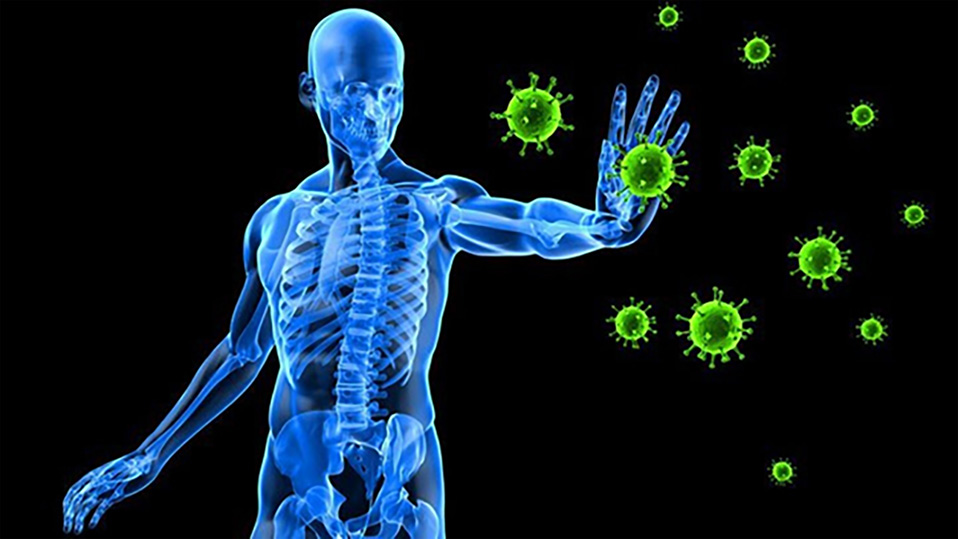This Blog is trying to offer a clear view on the most common issues related to the Immune System as since the beginning of this year mankind is confronted with a pathogen and almost always it is forgotten to stress that Humans have an Immune System that is designed to protect them from various intruders.
The information contained in this Blog is intended only for information and education purposes for interested readers, friends or students of the author. The author does not advocate the use of any particular health-care protocol, usage of remedies, or combination thereof. The author does not warrant the effectiveness or safety of any protocols or remedies contained in this Blog. The information contained herein shall not substitute for consultation with a physician or other qualified healthcare provider. Any attempt to diagnose and treat an illness should be done under the direction of an authorized healthcare professional.
In Part I the author will define and describe the Immune System and will address the three types of Immunity. In Part II the author will show what weakens the Immune System and will give recommendations on how to increase and train it.
Immunity is a defense mechanism of the body that gives protection against disease by acting like an army against pathogens (whether they are bacteria, viruses, parasites or other toxins) so that the body will not experience a disease induced by the pathogen in question. The immune System is represented by all the defense mechanisms against pathogen microorganisms and non-self-structures. This is a complex domain in which causes, symptoms and possible cures vary from person to person. Either way, generalizations must be avoided. What is good and right for someone can be fatal for another person. However, the author wants to raise the awareness of the reader that every individual possesses this very sophisticated defense system and that each person has many options on how to consciously stimulate and even train their immune system.
Specific terms:
Self – the body’s own structures recognized by the immune system represented by all structural or soluble macromolecules that exist in the body’s cells. Normally, the Immune System does not react against self-structures. However, there are auto-immune diseases where this does happen.
Non-Self – foreign structures in the body, which are not recognized by the immune system causing the immune system to act upon them through specific mechanisms of defense. An essential function of the immune system is the ability to distinguish between self-structures and non-self-structures by aiming to fight, neutralize and remove the non-self-structures in order to preserve homeostasis, a state of optimal functioning of the organism and self- sustaining health where an equilibrium is maintained by many mechanisms.
Antigen – any endogenous or exogenous substance perceived as non-self-structure and capable of triggering an immune response, like bacteria, viruses or other pathogens.
Antibody – also known as Immunoglobulin is a macromolecule produced in the lymphoid organs with the ability to recognize the foreign structure in the body, called antigen or any non-self- substance, and to elicit an immunological reaction that aims to neutralize, degrade and remove the antigen substance from the body. The immune response is how the immune system reacts against pathogens. It necessarily involves the stimulation and proliferation of the lymphocytes (immune cells which react against a specific antigen) and the synthesis of certain molecules among which is the antigen, represented by the antibodies and/or membrane receptors for antigen. A certain macromolecule is called antigenic if it triggers an immune response and reacts with antibodies or membrane receptors. The production of antibodies is the main function of the Humoral Immune System. Humoral immunity is so named because it involves substances found in the humors, or body fluids. They are antibodies, proteins and antimicrobial peptides. Humoral immunity contrasts with cell-mediated immunity. Its aspects involving antibodies are often called antibody-mediated immunity.
These antibodies will encounter antigens and bind with them. This will either interfere with the chemical interaction between host and foreign cells, or they may form bridges between their antigenic sites hindering their proper functioning, or their presence will attract macrophages or killer cells to attack and eliminate pathogens.
Three types of immunity:
1. Non-specific innate immunity is the totality of protective structures and mechanisms (skin, mucous membranes, exocrine secreted enzymes such as lysozyme in saliva, gastric acid) body temperature, high concentration of oxygen in the alveoli which confers protection against colonization of the respiratory tract by anaerobic organisms, the level of cortisol which controls the inflammatory response and resistance to infection, circulating macrophages, the secretion of mucous and other structures. This type of immunity gives protection against skin colonization, respiratory, digestive, urinary and genital tract with nonspecific pathogens. It is a natural inborn immunity of the body and it counteracts the pervasion, survival and multiplication of the pathogens in the body and can be regarded as a constant cleaning process.
2. Specific innate immunity is the body’s in-born resistance to infection with certain specific pathogens.
3. Acquired (adaptive) immunity confers to the body a specific resistance to a specific antimicrobial agent. As aging affects the cardiopulmonary system and other organs, it also affects the immune system. Although immunological memory becomes better, lymphoid organs that are the true immune system organs become weaker as people grow older. They are the thymus, the bone marrow, the spleen, lymph nodes, mucosal lymphoid tissue, the gut, the sinuses, the tonsils, the bronchi and the lungs.
In this Blog we have raised our awareness that humans have proper Immune Systems and we have defined and described the Immune System. The author will show factors that weaken it and give recommendations on how to strengthen it in the following Blog.
Until then stay healthy and happy!
With respect,
Oliver Stanković Life & Health Coach
Pranic Healer according to GMCKS
Certified SCIO Practitioner
Arhatic Yoga Practitioner
Mail: info@stankoviccoaching.com
Web: www.oliverstankoviccoaching.com
